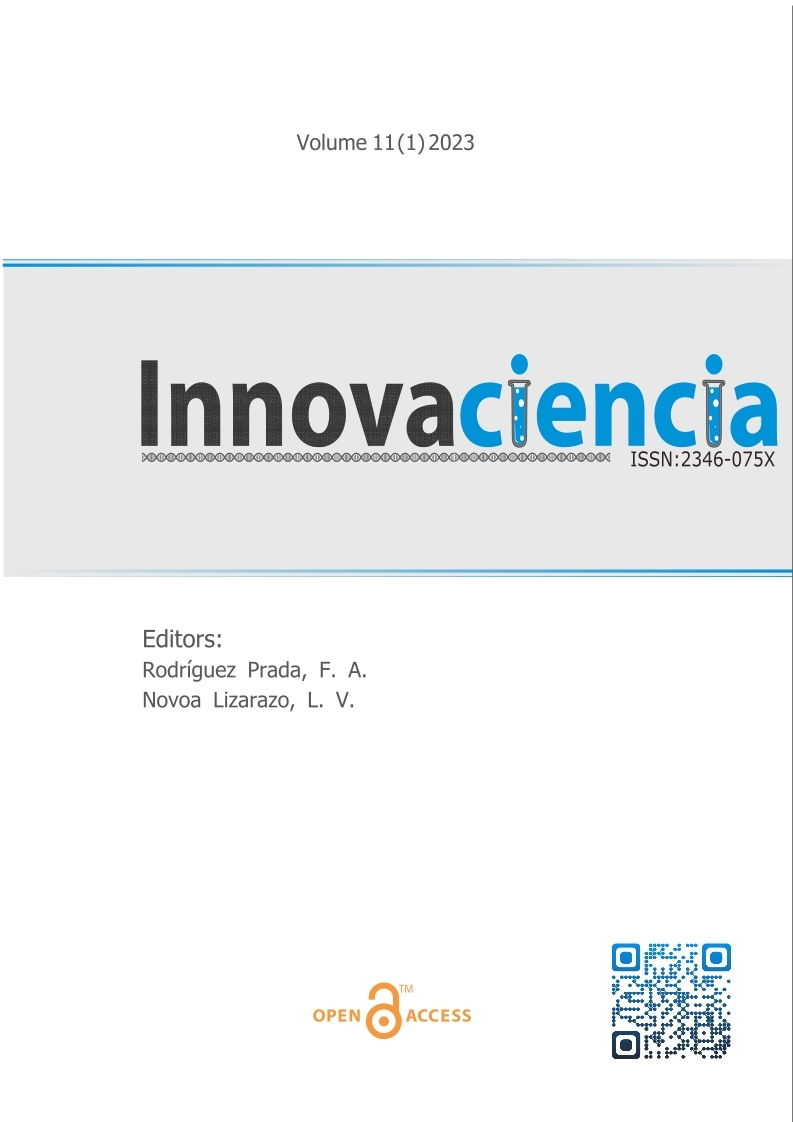Obtención de grasas dietéticas objetivo mediante la tecnología de hidrogenación paso a paso y su uso
DOI:
https://doi.org/10.15649/2346075X.3554Palabras clave:
Unsaturated fatty acids, Transisomers, Nickel catalyst, Fat and oil industry, Fat modificationResumen
Introduction: Fats are an important component of a number of food products and affect their consistency, shelf life, taste, and nutritional qualities. Step-by-step hydrogenation is one of the main methods of modifying dietary fats, which allows for influencing their chemical structure and properties. The purpose of this study was to establish the main approaches to the step-by-step hydrogenation of dietary fats, the problems of the method, the main areas of use, and prospects for improving the technology. Material and Methods: A search to identify relevant papers was conducted for sources using open electronic databases, such as Google Scholar, Scopus, and Web of Science. Results and Discussion: During the study, the most common conditions of the hydrogenation reaction were established. The most important characteristics of the catalyst were determined by the activity, durability, selectivity, and stability of the formation of isomers. The formation of trans isomers of fatty acids, which reduces the quality of fat, has been identified as the main disadvantage of step-by-step hydrogenation. Factors contributing to the formation of trans isomers included high temperature, catalyst properties, and high content of unsaturated fatty acids in the feedstock. Step-by-step hydrogenation was identified to be the most characteristic of the soybean industry and for the production of confectionery and baking fats with specified properties. Conclusion: The results obtained indicate the potential of step-by-step hydrogenation to produce edible fats with a certain melting point and organoleptic characteristics after solving the cis/trans-isomerisation problem.
Referencias
Patel AR, Nicholson RA, Marangoni AG. Applications of fat mimetics for the replacement of saturated and hydrogenated fat in food products. Curr Opin Food Sci. 2020;33:61-68. https://doi.org/10.1016/j.cofs.2019.12.008
Bhandari SD, Delmonte P, Honigfort M, Yan W, Dionisi F, Fleith M, Iassonova D, Bergeson LL. Regulatory changes affecting the production and use of fats and oils: Focus on partially hydrogenated oils. J Am Oil Chemists Soc. 2020;97(8):797-815. https://doi.org/10.1002/aocs.12366
Bruce JH. The technological challenges of reducing the saturated fat content of foods. Nutr Bull. 2020;45(3):315-320. https://doi.org/10.1111/nbu.12452
Oteng AB, Kersten S. Mechanisms of action of trans fatty acids. Adv Nutr;2020;11(3): 697-708. https://doi.org/10.1093/advances/nmz125
Isabaev I, Khudaykulov A, Dzhuraeva, N, Ashurova Z, Tursunova U. Obtaining technologically and physiologically functional special-purposes of fat products. In: IOP Conference Series: Earth and Environmental Science (pp. 1-7). Bristol: IOP Publishing; 2021.
Sánchez MA, Torres GC, Mazzieri VA, Pieck CL. Selective hydrogenation of fatty acids and methyl esters of fatty acids to obtain fatty alcohols – A review. J Chem Technol Biotech. 2017;92(1):27-42. https://doi.org/10.1002/jctb.5039
Jang ES, Jung MY, Min DB. Hydrogenation for low trans and high conjugated fatty acids. Compr Rev Food Sci Food Saf. 2005;4(1):22-30. https://doi.org/10.1111/j.1541-4337.2005.tb00069.x
Allen RR. 1978. Principles and catalysts for hydrogenation of fats and oils. J the Am Oil Chemists Soc. 1978;55(11):792-795. https://doi.org/10.1007/BF02682650
Žula M, Grilc M, Likozar B. Hydrocracking, hydrogenation and hydro-deoxygenation of fatty acids, esters and glycerides: Mechanisms, kinetics and transport phenomena. Chem Eng J. 2022;444:136564. https://doi.org/10.1016/j.cej.2022.136564
Stoffels MA, Klauck FJ, Hamadi T, Glorius F, Leker J. Technology trends of catalysts in hydrogenation reactions: A patent landscape analysis. Adv Synth Catalysis 2020;362(6):1258-1274. https://doi.org/10.1002/adsc.201901292
Zbikowska A. Formation and properties of trans fatty acids – A review. Pol J Food Nutr Sci. 2010;60(2):107-114.
Van Duijn G. Technical aspects of trans reduction in modified fats. Oilseeds Fats Crops Lipids. 2005;12(5-6):422-426. https://doi.org/10.1051/ocl.2005.0422
Dijkstra AJ. Kinetics and mechanism of the hydrogenation process – The state of the art. Eur J Lipid Sci Technol. 2012;114(9):985-998. https://doi.org/10.1002/ejlt.201100405
Zbikowska A, Onacik-Gür S, Kowalska M, Zbikowska K, Feszterová M. Trends in fat modifications enabling alternative partially hydrogenated fat products proposed for advanced application. Gels. 2023;9(6):453. https://doi.org/10.3390/gels9060453
Iida H, Takahashi K, Yanagisawa A, Hashimoto H, Igarashi A. Reduction of trans fatty acids in hydrogenated soybean oil using Ni/TiO2 catalysts. Food Chem. 2021;340:127927. https://doi.org/10.1016/j.foodchem.2020.127927
Bailey AE. Nickel catalysts in hydrogenation of fats and oils. Ind Eng Chem. 1952;44(5):990-994. https://doi.org/10.1021/ie50509a025
Jenkins TC, Jenny BF. Effect of hydrogenated fat on feed intake, nutrient digestion, and lactation performance of dairy cows. J Dairy Sci. 1989;72(9):2316-2324. https://doi.org/10.3168/jds.S0022-0302(89)79363-2
Pradhan BK, Saigiri S, Bharti D, Kim D, Pal K. Natural wax‐based oleogels for food application. In: Fat Mimetics for Food Applications (pp. 21-37). Hoboken: John Wiley & Sons; 2023.
Al-Jawaldeh A, Taktouk M, Chatila A, Naalbandian S, Abdollahi Z, Ajlan BA, Hamad NA, Alkhalaf MM, Almamary S, Alobaid R, Alyafei SA, Azizi MH, Baqadir NM, Barham R, Binsunaid FF, Ammari LE, Ati JE, Hoteit M, Massad H, Nejad MS, Nasreddine L. A systematic review of trans fat reduction initiatives in the Eastern Mediterranean region. Front Nutr. 2021;8:771492. https://doi.org/10.3389/fnut.2021.771492
Sun X, Guo C, Zhang Y, Wang Q, Yang Z, Wang Z, Wang W, Cao Z, Niu M, Li S. Effect of diets enriched in n-6 or n-3 fatty acids on dry matter intake, energy balance, oxidative stress, and milk fat profile of transition cows. J Dairy Sci. 2021;106(8):5416-5432. https://doi.org/10.3168/jds.2022-22540
Descargas
Publicado
Cómo citar
Descargas
Número
Sección
Licencia
Derechos de autor 2023 Innovaciencia

Esta obra está bajo una licencia internacional Creative Commons Atribución-NoComercial 4.0.
Todos los artículos publicados en esta revista científica están protegidos por los derechos de autor. Los autores retienen los derechos de autor y conceden a la revista el derecho de primera publicación con el trabajo simultáneamente licenciado bajo una Licencia Creative Commons Atribución-NoComercial 4.0 Internacional (CC BY-NC 4.0) que permite compartir el trabajo con reconocimiento de autoría y sin fines comerciales.
Los lectores pueden copiar y distribuir el material de este número de la revista para fines no comerciales en cualquier medio, siempre que se cite el trabajo original y se den crédito a los autores y a la revista.
Cualquier uso comercial del material de esta revista está estrictamente prohibido sin el permiso por escrito del titular de los derechos de autor.
Para obtener más información sobre los derechos de autor de la revista y las políticas de acceso abierto, por favor visite nuestro sitio web.
















